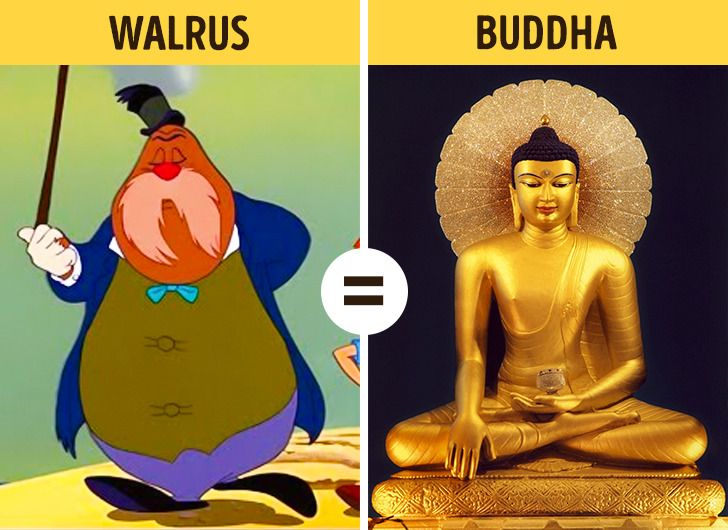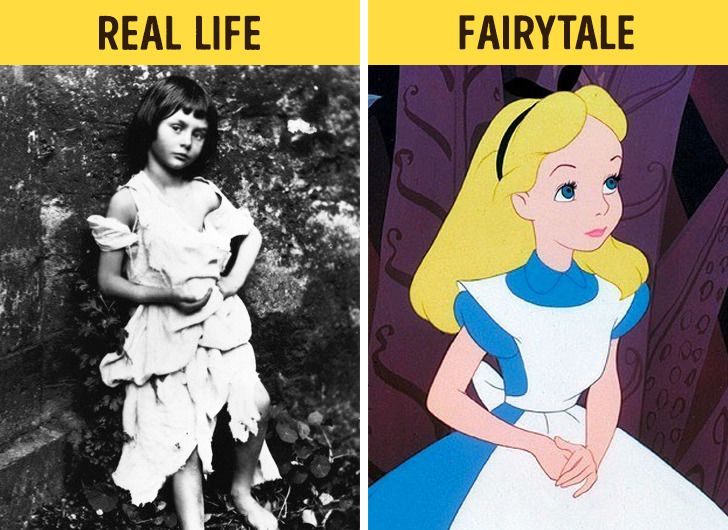Do you remember the story of Alice’s Adventures in Wonderland?
It was one of our favorite stories during our childhood but little did we know that there’s much more than what meets the eye. Now that we are all grown up, we realize that it wasn’t actually meant for kids. What we are about to share with you is certainly going to blow your mind away! The story of Lewis Carroll’s Alice’s Adventures in Wonderland had a tremendous impact on film, literature, and even psychology. It was the inspiration for films and ballets, as well as sequels and remakes of the original story. In fact, the main character’s name has been given to a psychological disorder: Alice in Wonderland Syndrome (AWS). Yes, that’s right!
This seemingly innocent children’s story was the subject of heated debates among scientists throughout the twentieth century, and even Sigmund Freud expressed his thoughts on it. The discussion revolved around the question of whether the story was written for children or for adults.
Want to know what hidden meanings we are talking about? Then keep scrolling down to have a peek at these hidden meanings from the movie and you will be blown away by the facts which have been circulating for a long time now.
1. Puberty is a sign of Alice’s shrinking and growing.

Alice was terrified of disappearing completely because she shrank or grew when she ate certain cakes or drinks. Scientists have three possible explanations for the changes in her body that were not explicitly stated in the story:
- The changes to Alice’s body are reminiscent of those that occur in a teen’s body during puberty. Carroll’s portrayal of the character’s adolescence has been criticized by some. Because Alice is only 7 years old, she is too young to be a teenager.
- Extending Universe is linked to the character. To put it another way, there is a theory that predicts that the universe will eventually run out of matter. This explains the character’s fear of disappearing if she shrank too much.
- Similar to how Alice became disoriented as a result of taking hallucinogenic substances, other people have noticed an indication of such substances.
2. The character’s pig is an English King.

The story’s allusion to England’s 15th-century War of the Roses is widely accepted. Just like in the story, there was a lot of scheming and betrayal during this time period.
If the guess is correct, the baby that grew up to be a pig belongs to the White Rose. Specifically, Richard III had a sigil with a white boar. Shakespeare went so far as to portray Richard in a negative light in his own play about the subject.
3. Pepper in the Duchess’s home masks the odor of bad food.
According to the story, the scullery was adding pepper to the soup, which explains why the Duchess’s house smells so strongly of pepper. This may have been a clue that the food was peppered a lot at the time to mask the stench of rotten food.
4. Alice takes on the role of Eve, who becomes a sinner.

Alice’s adventures begin in a peaceful garden. It was a picture-perfect setting, lush and serene, and many compared it to Eden. Alice, on the other hand, refuses to eat an apple and instead descends into the rabbit hole, where she encounters a world that has a profound effect on her. Children are innocent until they enter puberty and become sinners. This theory is logical, and it’s easy to see how it could apply.
5. Freudian symbols include keys, doors, and caterpillars.

When Freudian theories gained widespread acceptance, the story of Alice was found to be replete with gynecological allegories. Doorknobs and keys that open the doors hidden behind the curtains were discovered by Freud fans. They couldn’t have missed Absolem, the enormous caterpillar that looks like a…
Despite the fact that this theory has life, it lacks believability due to the fact that anyone can find these symbols anywhere they look.
6. Actually, Walrus and Carpenter are both Buddha and Jesus.

This is the title of the poem that Tweedledee and Tweedledum read to Alice. The poem tells the story of Walrus and Carpenter, who walk on the beach and invite oysters to join them. The oysters wash up on the beach and are devoured by Walrus and Carpenter. At the end, Walrus began to cry.
There are several possible interpretations:
- Carpenter is a caricature of Jesus and Walrus is a caricature of Buddha. The character Loki from Dogma believes this. The logic is simple: Walrus is healthy and happy, so he is Buddha or elephant Ganesha, and Carpenter is a direct reference to Jesus’ father’s profession.
- J. Priestly is convinced that the poem tells the story of England’s (Walrus’) colonisation of America (Carpenter).
- A more heinous interpretation exists. Some believe that Walrus and Carpenter are politicians who murder the masses — the oysters.
7. The poem about the White Rabbit in Chapter 12 reveals Carroll’s love mystery.

Some researchers interpret the reference as a nod to Lewis Carroll’s unusual friendship with Alice Liddell, who served as the main character’s prototype. Here are the lines we’re referring to:
He sent them word I had not gone:
(We know it to be true):
If she should push the matter on,
What would become of you?
This is one of the most delicate points in the story’s interpretation. Some believe that when the girl was supposed to reach marriageable age, the writer planned to marry her, but for some reason, he had a debate with Mrs. Liddell and hasn’t seen any of the family members since.
So that you have read and seen the hidden meanings, what do you think about it? Have you ever noticed it before? Let us know about your thoughts and opinions down in the comments section!

